T. A. Gardner
ACCESS: Top Secret
- Joined
- 18 February 2021
- Messages
- 1,137
- Reaction score
- 1,997
I have quite a few personal photos of the A-7 from the 80's somewhere if those would be of interest.
It took a long time to work the bugs out of the F100 engine.overscan said:Vought building two seat A-7E derivative (Vought V-519) as advanced trainer; seat advanced attack version, with F100 turbofan and second crew member space given over to 30mm cannon ammo also considered.
Source:
- Air Enthusiast June 1972, p330
The bit about the "F100 turbofan" leads me to believe that the YA-7F had a very long gestation period.
Still wasn't as long as the Crusader.Who has some good stuff on the YA-7F? Talk about 'coming full circle," it almost re-evolved into the supersonic F-8 Crusader...
The V-526 was the better option for a Hornet competitor as it was able to fulfill both the fighter and strike roles. Meanwhile, the Corsair, at its heart, was still a bomb truck.
Shazam ! Vought proposal against the Hornet, 1975-76. Was an A-7E with an afterburning TF41, called "B-32K". Unfortunately not good enough to threaten the Hornet.
Given 90% of what the F-16 does today, an afterburning, stretched A-7 would do just as well. If not better, since the A-7F had a slightly bigger bombload (wiki/Jane's says "up to 17klbs" for the F16 versus "over 17klbs" for the A7F)The V-526 was the better option for a Hornet competitor as it was able to fulfill both the fighter and strike roles. Meanwhile, the Corsair, at its heart, was still a bomb truck.
The A-7F was also a denavalised version. A carrier capable "A-7F" would have a lower bomb load. Though likely still more than the Legacy Hornet didGiven 90% of what the F-16 does today, an afterburning, stretched A-7 would do just as well. If not better, since the A-7F had a slightly bigger bombload (wiki/Jane's says "up to 17klbs" for the F16 versus "over 17klbs" for the A7F)
I known that is not in service, neither the Hellenica AF o Portuguese AF (last users), but Could have been possible to integrate a moder designator pod like LANTIRN or Litening?
thanks
For the A-7 Corsairs, where could the targeting pods (e.g. ATFLIR, LANTIRN, LITENING, Sniper, etc.) be carried?If you're willing to spend the money on it, and the onboard generator can handle the increased electrical demands, sure
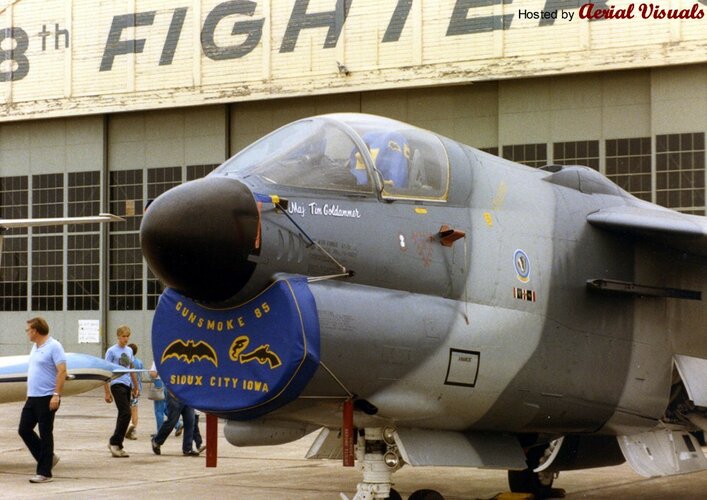
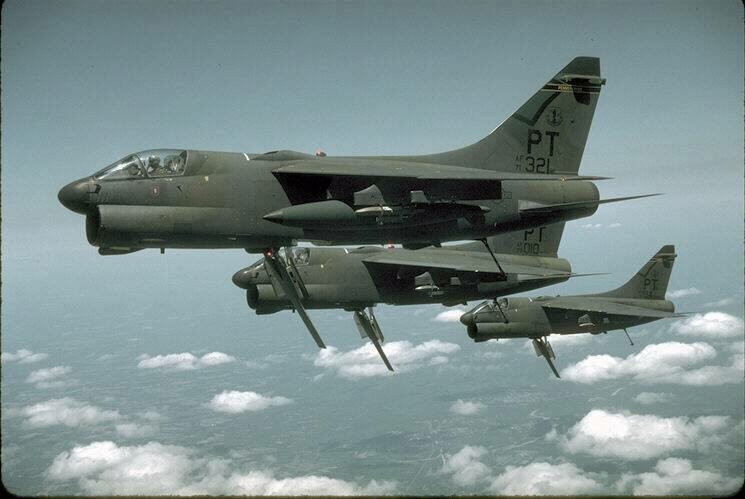
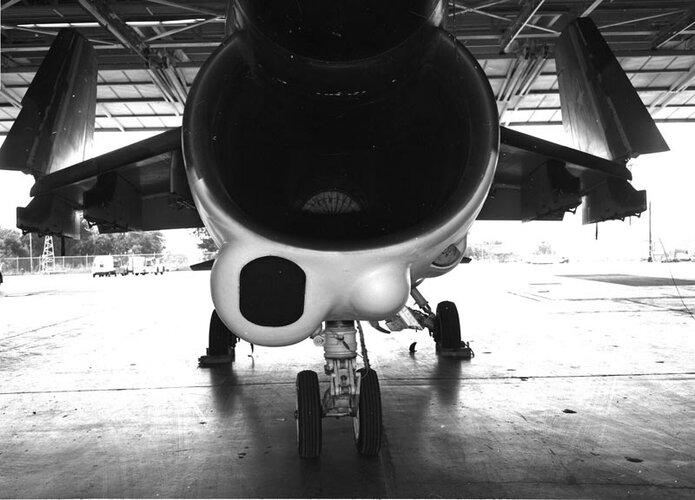

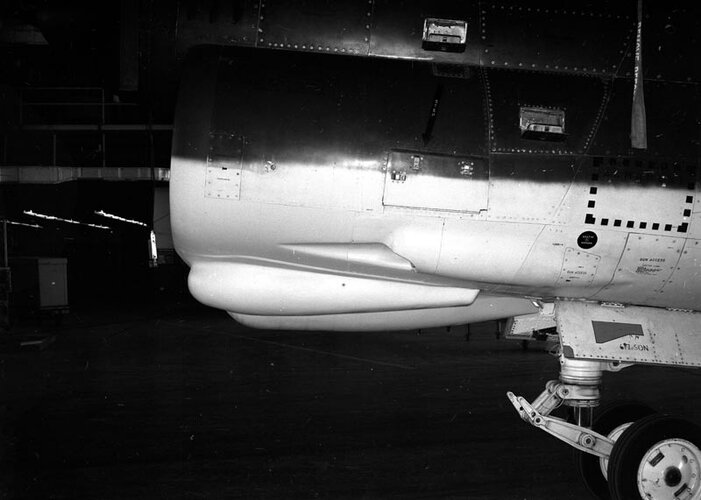
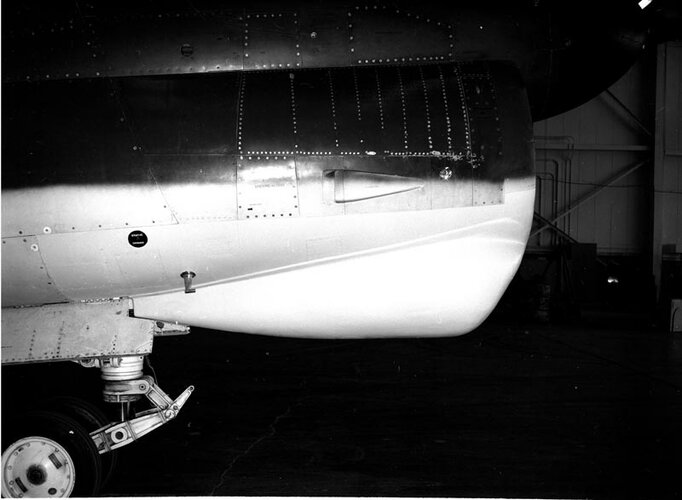
Right where the Texas Instruments AN/AAR-45 LANA (Low-Altitude Night Attack) Forward Looking Infra-Red (FLIR) pod was carried on the A-7E.
A-7E NAS Lemoore October 11 1979
View attachment 739804
On 8 June 1984, the entire squadron and its twelve Corsairs arrived at Marine Corps Air Station Iwakuni, Japan, and became the first Navy unit to operate under the control of the Marine Corps since World War II. The Gunslingers were a component of Marine Aircraft Group TWELVE, First Marine Aircraft Wing. VA-105 won its fifth Battle “E”, the Navy Unit Commendation medal, and the Commander, Light Attack Wing One Maintenance Department of the Year award. In December 1984 the squadron returned to its home on NAS Cecil Field.

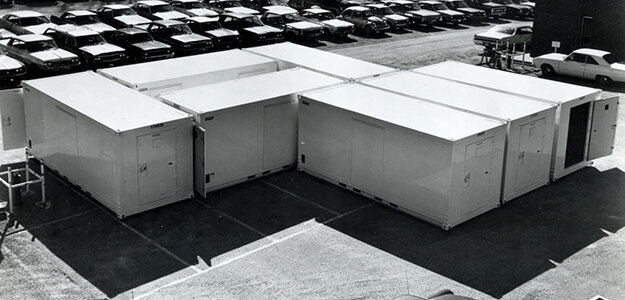

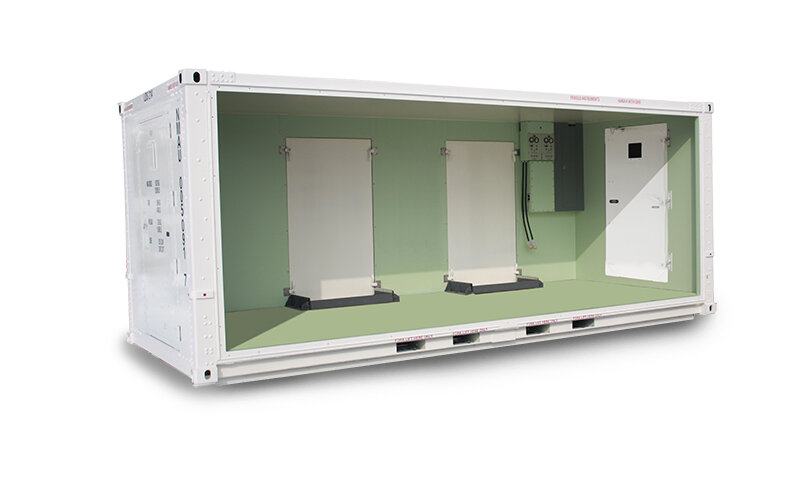
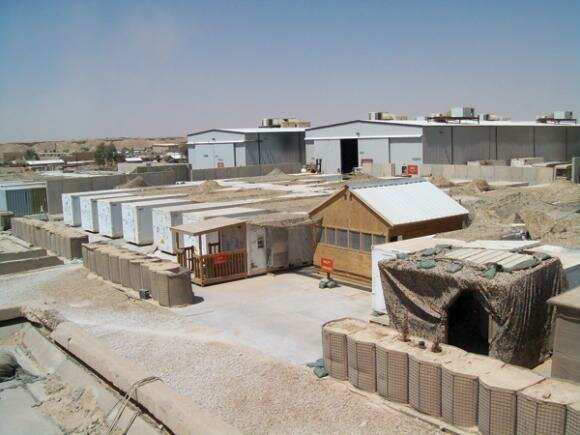
I was on that West Pac, '82/'83!Right where the Texas Instruments AN/AAR-45 LANA (Low-Altitude Night Attack) Forward Looking Infra-Red (FLIR) pod was carried on the A-7E.
A-7E NAS Lemoore October 11 1979
View attachment 739804
A-7E USS Eisenhower CVN-69 July 2 1988
View attachment 739805
A-7E with AN-AAR-45 1 Feb 1982
View attachment 739806
View attachment 739807
A-7Es aboard CVN-65 Arabian Gulf 24 Oct 82
View attachment 739808
Send that to Doc, it's got warts!There was a proposal for a more-complete sensor suite for the A-7Ds - A-7D 67-14582 Front View with Mockup Hughes FLIR LST:
View attachment 739812
View attachment 739813
View attachment 739814
View attachment 739815
